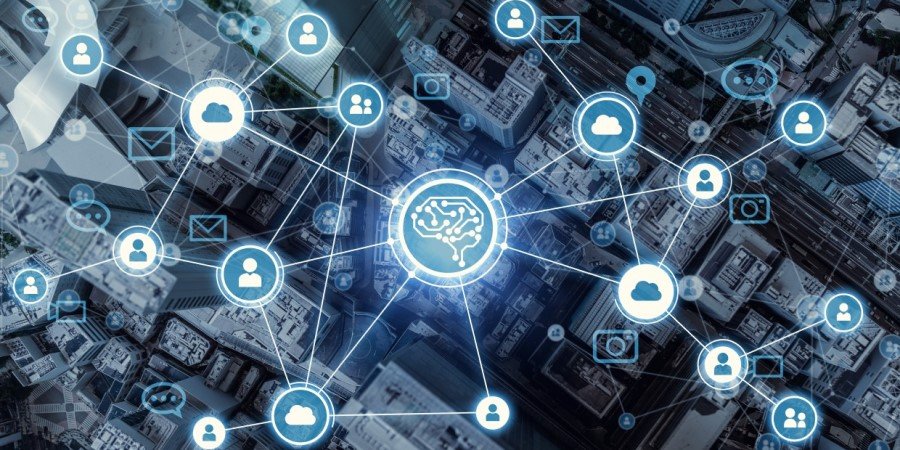
Just as the web disrupted businesses from top to bottom by transforming marketing, distribution and supply chains, AI technologies are now putting all of us through another major transition. How so, you ask? Let’s understand the impact of the web’s disruption first, as a template for how technology disrupts businesses.
Think of the web and AI as technologies that impact infrastructure first, then go on to transform both businesses and content. The web’s impact on infrastructure was seen mostly through the lens of a digital transition. We went from a world where everything was analog and offline to a world where everything became digital and online. Think about how media audiences were measured and monetized back then vs now.
Just as the Web disrupted go-to-market strategy
in the 1990’s, so is AI now
This digital transition created a new medium that did not exist before and that we now take for granted, the web, which has come to transform how content is created and consumed. It also profoundly affected business operations primarily through disintermediation, enabling businesses to reach customers directly through online channels for both sales and customer care. Think of how you buy goods today, how you interact with your service providers.
Similarly, AI is now affecting all three areas but in different ways.

Scalable computing
IT infrastructure has been transformed by the advent of cloud technologies. We’ve transitioned in the last five years from an on-premise bias toward a cloud bias. The benefits are obvious to anyone who’s dealt with it: maintenance, cost, but most of all scalable computing. Any business, literally any business, can now leverage Google or Amazon’s massive infrastructure and have access to virtually unlimited computing power on demand. This has made it possible to implement algorithms that were simply impractical until now. Just as Internet technology impacted business nearly thirty years after their creation, many machine learning and deep learning algorithms were invented decades ago. The first multilayered neural network dates back to 1975, and right around 2000 the availability of better computing power through GPUs started enabling neural networks as a practical tool.
Automated cognition
We’ve experienced exponential growth in computing power. We’ve also made major advances in our understanding of human cognition. This goes far beyond machine learning, to encompass how we think, how we analyze data, how we come to conclusions. Take the generation of insights. We now understand the process of insight well enough to have machines generate them at machine scale and speed. This was enabled by advances in the field of causal analysis and causal inference, pioneered by Judea Pearl, one of the founding fathers of modern AI. Together with other machine learning algorithms we can apply a portfolio of techniques to perform pattern classification, clustering, anomaly detection, root-cause analysis, complex predictions, and so on.
Data externalities
This last driver of change is more nuanced but is also arguably the most impactful of all. Externality is just a fancy word to refer to indirect effects, effects that may not have been considered at first. Think of network externalities, which have been around forever. Build a road from Monroe, Louisiana to nearby Ruston. You will bring value to parents in Monroe, who can now visit their college-bound children on the campus of Louisiana Tech. Repeat the process across the US, and you will make many parents happy, but you will only increase value linearly. Now actually connect all these roads to each other, and you’ve enabled the transport of goods anywhere, creating exponential value in the process. The same network externalities support the market cap of Google, Facebook, and others. The value of Facebook comes from the fact that billions of people are on it, not because of its user interface.
Data externalities, then, refer to the fact that some data sets become exponentially more valuable as they grow. Think of customer usage data, when leveraged properly. By capturing usage data, tech-forward operators can use their data to customize experiences and better serve customers, which in turn increases tenure, increases usage data, and leads to better understanding of what customers like. The gap between the data haves and the data have-nots grows exponentially, much as it would with capital.
So, how does this impact go-to-market strategy? In all cases the theme is the same: technology unlocks new capabilities. It enables leaders to operate faster and more efficiently, to identify new growth opportunities. We’ll explore the areas primarily affected by these drivers in upcoming posts.





